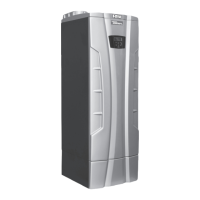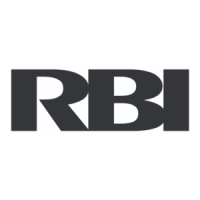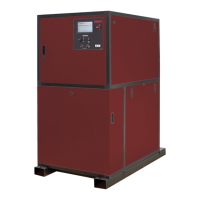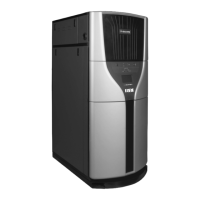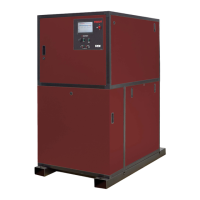nne
co
er tu
e gas
o
ers
water
eaters –
o
er
anua
17
Figure 12A Low Temperature Piping
(See Notes and Adjustment Procedures)
Figure 13 Multiple Boiler Piping
(See Notes)
Operated Valve
Air Vent
Pressure Switch
Aquastat Union
Gas Pressure
Regulator
Automatic
Thermometer
Flow Switch
Pressure
Relief Valve
Reducing Valve
Self-Operated
Check Valve
Pressure
Va lve
Pump
Motorized Valve
Solenoid
Ball Valve
Bufferfly Valve
Angle Val ve
Gate Valve
Globe Val ve
Balance Valve
Backflow-
Prevention
Device
3-Way Valve
Expansion
Tank
H-15 Rev 4
NOTES:
1. Boiler circuit piping must be large enough to handle
maximum ow through unit.
2. Boiler pump sized to boiler design ow requirements.
3. All boilers furnished with factory mounted outlet water
temperature gauge.
4. Boiler pump purging required. Use terminals supplied.
5. Secondary loop pipe diameter must be sized large enough to
handle maximum ow through all units.
Notice: These drawings show suggested piping con guration and valving.
Check with local codes and ordinances for speci c requirements.
Adjustment Procedure
To Maintain Inlet Temperature
Above Dew Point
T1-Temp-Min=110° For Atmospheric
T1-Temp-Min=125° Sealed Combusion
1. Turn heater on and open valves A & B.
2. After steady-state operation, if T1 is less
than Temp-Min slowly close valve B until
T1 climbs to desired operating temperature
above Temp-Min.
3. If T1 is greater than desired operating
temperature, slowly close valve A to adjust to
lower desired temperature above Temp-Min.
4. Check after system operating temperature
has stabilized. Make nal adjustments.
5. Follow same adjustment procedure for
sealed combustion.
H-3 Rev 4
NOTES:
1. Boiler circuit piping must be
sized large enough to handle
maximum ow through unit.
2. Boiler pump sized to boiler
design ow requirements.
3. All boilers furnished with
factory mounted outlet
water temperature gauge.
4. Boiler pump purging required.
Use terminals supplied.
Notice: These drawings show
suggested piping con guration
and valving.Check with local
codes and ordinances for
speci c requirements.

